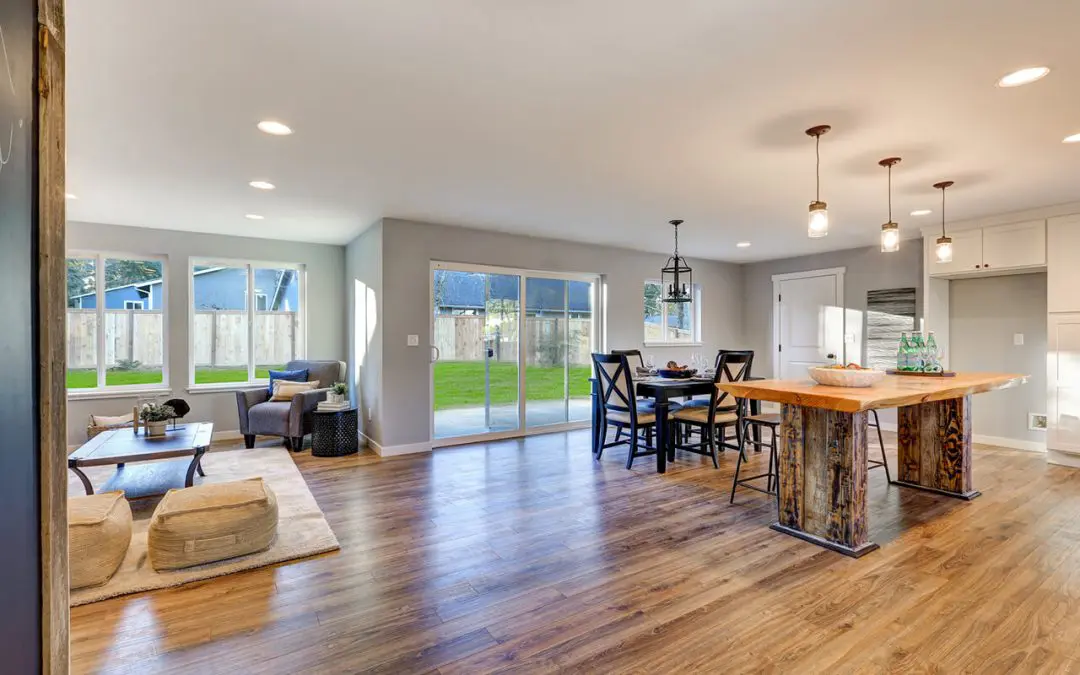Since the mid-twentieth century, open floor plans have been appealing to homebuyers. Characterized by large, connected spaces without walls separating key areas, such as the kitchen, living room, and dining room, open layouts create an airy, flowing environment. However, while open floor plans offer many benefits, they also come with some drawbacks worth considering before committing to this design trend. Below, we’ll explore the pros and cons of open floor plans to help you make the right choice.
The Benefits of Open Floor Plans
Open floor plans have become a sought-after design style, especially in modern and contemporary homes. One of the primary reasons people are drawn to them is the sense of spaciousness they create. The house feels much larger and more inviting without walls breaking up the main living areas.
In addition to the illusion of space, open floor plans provide excellent opportunities for social interaction. They make it easy to communicate with family members or guests, whether you’re cooking in the kitchen, lounging in the living room, or entertaining in the dining area. This flow between spaces makes open floor plans especially appealing for those who enjoy hosting gatherings or want a family-friendly layout where everyone feels connected.
Open layouts also allow for more natural light to fill the space. With fewer walls obstructing windows and doorways, sunlight travels further into the home, creating a brighter and more welcoming atmosphere. This enhances the aesthetic appeal and reduces the need for artificial lighting during the day.
The Drawbacks of Open Floor Plans
Despite the many advantages of open floor plans, there are some notable downsides to keep in mind. One of the biggest concerns is the lack of privacy. Open layouts may not be the best choice for individuals or families who prefer designated areas for specific activities, such as watching television, working, or relaxing. Without walls to separate these spaces, finding a quiet, private area within the home can be challenging.
Noise is another potential drawback. With open spaces, sounds tend to carry further, making it difficult to contain noise in a single area. Sounds from cooking, conversations, or the TV travel easily throughout the space, which might be problematic for households with different schedules or a need for quiet time.
Temperature control is also an issue in open floor plans. Large, unsegmented spaces can be harder to heat or cool evenly, which could lead to higher energy bills. In homes with multiple levels, heat may rise and collect on upper floors, leaving lower floors uncomfortably cool. While modern HVAC systems mitigate some of these concerns, homeowners should still be prepared for potential heating and cooling issues.
Is an Open Floor Plan Right for You?
Ultimately, choosing an open floor plan depends on your lifestyle and preferences. If you enjoy a bright, spacious environment that encourages social interaction and creativity in design, an open layout may be the perfect fit. However, if privacy, noise control, and defined spaces are more important, a traditional floor plan with separate rooms will better suit your needs.
While open floor plans offer many benefits, they also present challenges. Consider your lifestyle and needs to determine whether an open layout is the right choice for your home.
Pros and Cons of Open Floor Plans FAQs
Are open floor plans good for small homes?
Open floor plans can make small homes feel larger by eliminating walls that break up the space. However, proper furniture arrangement is needed to avoid a cluttered look.
Can you create zones in an open floor plan?
Yes, using furniture, area rugs, or even partial walls or dividers will help establish distinct zones for activities like dining, relaxing, or cooking while maintaining the open feel.
Are open floor plans harder to sell?
Open floor plans remain highly desirable and are generally appealing to buyers. Some buyers prefer more traditional layouts, especially those looking for privacy or noise control.
What’s the best way to reduce noise in an open floor plan?
Soft materials such as area rugs, curtains, and upholstered furniture help absorb sound and reduce noise levels in open spaces.
Home Inspectors of Columbus provides comprehensive professional inspections to homebuyers and sellers in the Chattahoochee Valley of Georgia. Contact us to request an appointment for our services.

